
Good morning Brisbane

NEW WAYS OF OWNING AND USING CARS IN 21ST CENTURY
XXX [22 June 2019 – Page to be rewritten and updated XXX]
A crowd thought experiment in a fast evolving area of transport policy and practice, open to anyone here who may wish to jump in with ideas, criticism and/or proposals — or perhaps only to pull up a chair and see what happens in a case like this. Basically the idea is to take apart a very wide range of the “future car in cities” issues from a variety of very different perspectives — and then see if and how we might put together a number of the pieces to come up with a useful view (or views) of the ten year future before what we for so long insisted on calling the “modern motor car”.
Starting from the rich base provided by the World Carshare Consortium, which for almost 15 years now has been focusing its attention on the varieties of carsharing that are fast multiplying and taking an increasingly important role in the mobility options of people in cities around the world – as you can abundantly see at [ XXX Update following }}}
http//worldcarshare.com + http://www.facebook.com/groups/worldcarshare/ + http://groups.yahoo.com/group/WorldCarShare, we would now like to broaden the focus to consider what may be the future of the car in the city, starting from the base of new ways of owning and using cars in this still new century.
These new ways to own and use cars has a brilliant, in many ways surprising and certainly very different future, which in fact is already well in process and will be abundantly followed here. But there is more to our story than that. Stay tuned to xCars.
__________

Good morning Brisbane
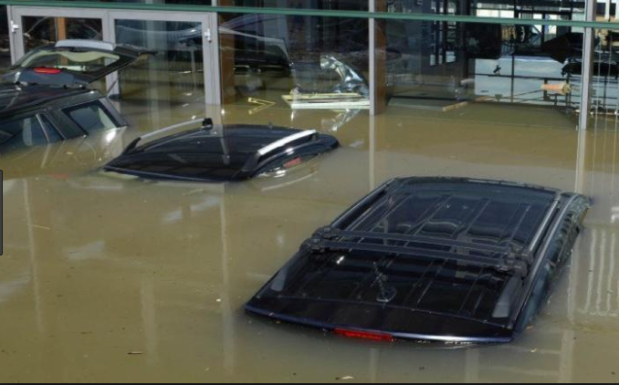
Available today at advantageous prices
– By Jeff McMahon

Founding editor, Joel Crawford, announces final issue of Carfree Times
I have decided to suspend my online creative efforts indefinitely. This will probably be the last Carfree Times. I don’t plan to shoot stills or video except incidentally, and there will probably be few or no new videos.
In a sense, what I’m doing is giving up virtual presence in favor of actual presence. I am looking at screens far too much. I enjoy face-to-face interaction, particularly with an audience. I am available for these kinds of events within railing distance of Amsterdam.
We are going to have carfree cities, one way or another, I’m pretty sure. Money, ecology, and happiness all optimize at one and the same point: carfree cities. There is no cheaper way to build decent cities. No other urban form has smaller environmental impacts. Urban quality of life is always improved by removing cars.

In the small fishing town of Ísafjörður, Iceland, an exciting development in road safety has just popped up – almost literally. A new pedestrian crossing has been painted that appears to be 3D by way of a cleverly-detailed optical illusion.
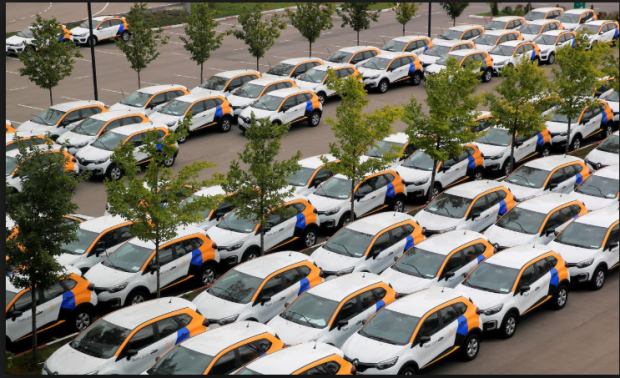
Looking for a share car in Moscow this morning? A sample of the 28k cars waiting for your call
By Ilya Khrennikov. February 8, 2019
This from Bloomberg rings many bells and is just too good to be passed up for our students and readers. Right up the middle of World Streets long time position on the steady global shift from ownership to use in the cities/car nexus , it is thus passed on here with thanks to the author and the publisher. The complete article with photos, graphics, a short video and references is available from Bloomberg at https://bloom.bg/2UPplxmz . Let’s have a look.
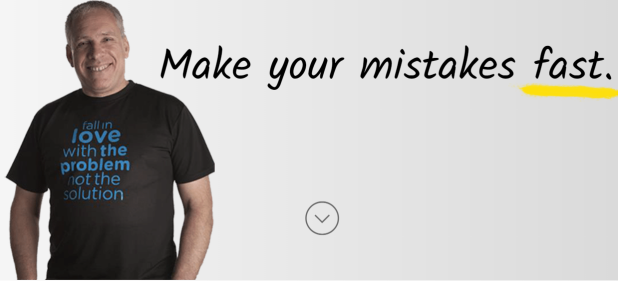
PREFACE: It is always a good idea, no matter how hard and even smart we may be working on our project, concept or dream, if we are able to have the benefit of the comments and suggestions of some bright and inventive outsider, someone who has not spent all their time 24/7 staring at the challenges in front of us transportation guys. Let’s have a look at this fresh commentary from one Israeli entrepreneur, Uri Levine, who says he hates traffic jams — and then take some time to ponder a bit on his vision, ideas and hopes before we turn back to the tasks at hand. Thanks Uri for your fresh vision. Let’ see if we can in our next big project — the Five Percent Challenge — respond to your challenge.
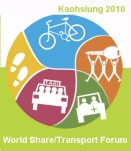 After many decades of a single dominant city-shaping transportation pattern – i.e., for those who could afford it: owning and driving our own cars, trucks, motorcycles and bicycles, getting into taxis by ourselves, riding in streets that are designed for cars and not much else — there is considerable evidence accumulating that we have already entered into a world of new mobility practices that are changing the transportation and city landscape in many ways. It has to do with sharing, as opposed to outright ownership. But strange to say, this trend seems to have escaped the attention of the policymakers in many of the institutions directly concerned. Continue reading
After many decades of a single dominant city-shaping transportation pattern – i.e., for those who could afford it: owning and driving our own cars, trucks, motorcycles and bicycles, getting into taxis by ourselves, riding in streets that are designed for cars and not much else — there is considerable evidence accumulating that we have already entered into a world of new mobility practices that are changing the transportation and city landscape in many ways. It has to do with sharing, as opposed to outright ownership. But strange to say, this trend seems to have escaped the attention of the policymakers in many of the institutions directly concerned. Continue reading
Arve Hansen’s excellent PhD thesis on the transition from bicycles and walking to motorbikes and cars in Hanoi is available here bit.ly/2MJEPOU. Thanks to Javier Caletrío <jmontfra@hotmail.com> and our friiends at the UTSG for the heads-up and to the Mobile Lives Forum for the following texte excerpts from their summary presentation at </jmontfra@hotmail.com>http://bit.ly/2Np3BJB
____________________
* Interview with the author, Arve Hansen of the Center for Development and the Environment, University of Oslo.
My overall research topic is consumption and development, and I am particularly interested in changing consumption patterns in contexts of rapid social and economic changes. In my PhD thesis I studied the transition from bicycles and walking to motorbikes and cars in Hanoi. In other words, I studied a transition from very low-carbon mobilities to high-carbon mobilities. I approached the topic at the intersection between macro-scale processes of economic development and everyday mobility practices. And in Vietnam’s capital city, understanding contemporary mobilities first and foremost requires an understanding of the motorbike, a so far surprisingly understudied vehicle in the mobilities turn.

– Ashley Carruthers – https://theconversation.com/amp/cars-bicycles-and-the-fatal-myth-of-equal-reciprocity-81034
Any public conversation about on-road cycling in Australia seems to have only one metaphor for the relationship between drivers and cyclists: equal reciprocity.
An utterance like “Drivers must respect cyclists’ space on the road” must inevitably be followed by something like “For their part, cyclists must ride responsibly and obey the road rules.”
For instance, the campaign promoting a new road safety law in New South Wales tells us:
Drivers, bicycle riders and pedestrians all need to Go Together safely. We should all respect each other’s space and ensure that everyone stays safe.

In the small fishing town of Ísafjörður, Iceland, an exciting development in road safety has just popped up – almost literally. A new pedestrian crossing has been painted that appears to be 3D by way of a cleverly-detailed optical illusion.

Car Free Day in Bogota Colombia 2016
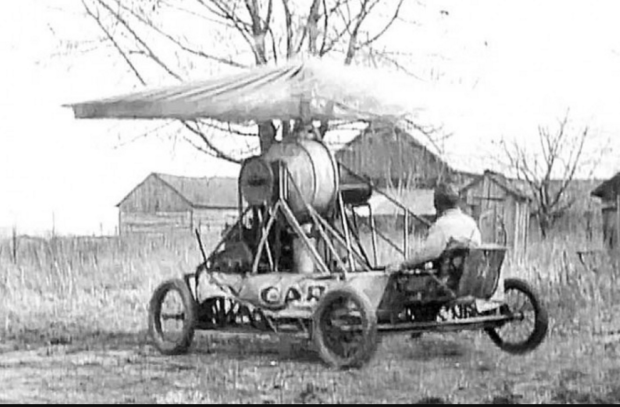
From the xCar archives – https://www.facebook.com/groups/worldcarshare/ (218 members)
USA. Inventor John W. Pitts, pathological inventor, notable primarily for his attempts at building a flying car and actually get it off the ground, the “Sky Car”. Source: The Old Motor, http://theoldmotor.com
The “Sky Car” was powered a four-cylinder engine. It did get off the ground by roughly eight inches or so and the “flight” ended. It was obviously staged for the camera and unwisely located right next to a tree.
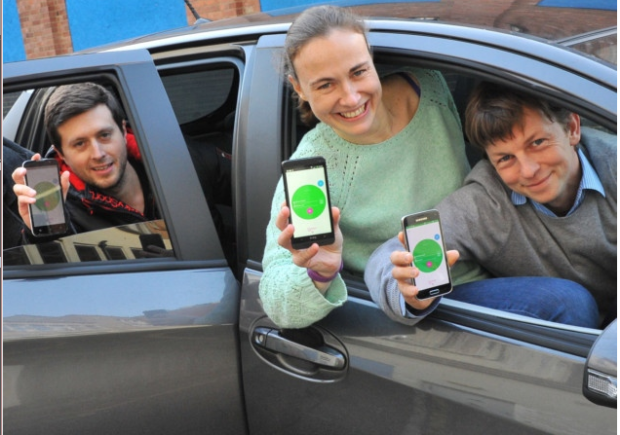
Ali Clabburn, Founder, MD, and Possiblist of the UK ridesharing group Liftshare (at right above) reminds us 18 years later of how much has changed in the world of ridesharing, but also the whole spectrum of sustainable transport thinking and practice.
Ali’s personal story with ridesharing got started by accident.

Photo: Wikipedia
Uber blasted out an Excel spreadsheet to reporters this morning, accompanied by a story and editorial in the Daily News, with data providing a snapshot of how many Uber vehicles are on Manhattan streets south of 59th Street, New York’s central business district. While Uber claims the data shows its vehicles aren’t responsible for congestion in the city core, transportation analyst Charles Komanoff has crunched Uber’s own numbers and estimates that the service has actually reduced traffic speeds in the central business district by about 8 percent.
– – – > Full text of original available here.

The purpose of this first exploratory workshop hosted by the European Citizens Mobility Forum (ECMF) is to solicit peer reviews, critical commentary and action recommendations on the part of the expert participants on the ideas and proposals set out for the group by the invited speaker. Observations and recommendations both from the vantage of their specific organizations, and more generally to the ECMF as a major organization responsible for collective land passenger transport. The complete text of this working presentation follows.
This little picture gives us a few ideas about cars in China today. Important if we bear in mind that today is the first day of the future.
In response to our New Year’s annual roundup of the library of striking and informative videos assembled over the last years by the editor and readers of World Streets, one just came in today from New Zealand, thanks to Paul Minett, Chairman of the Ridesharing Institute. To contact him directly, email him at paulminett@tripconvergence.co.nz.
Reaching new fundraising heights, Uber is now seeking to conquer the world — willingly or by force. Neither white knight nor bloodsucking scoundrel, Uber is posing tough questions to our culture of innovation in Europe
The smartphone-driven rideshare and taxi alternative service company Uber, founded in 2009 and headquartered in San Francisco, has announced for the second time in 2014, a billion dollar-plus fundraising! The company, which offers applications linking customers with drivers, now overtakes records previously held by Facebook: € 2.7 billion raised (with $ 600 million of additional potential), and a market valuation at $ 40 billion.
Yet if Uber is known to the public it is more for the controversies it is raising in its “war” against the taxis, which has in recent months turned into a crusade against all comers and for “free mobility”: against street taxis, against national governments and regulators, against local governments, and even against less controversial private hire services (in France the so-called VTC hire services have joined a lawsuit against Uber).
